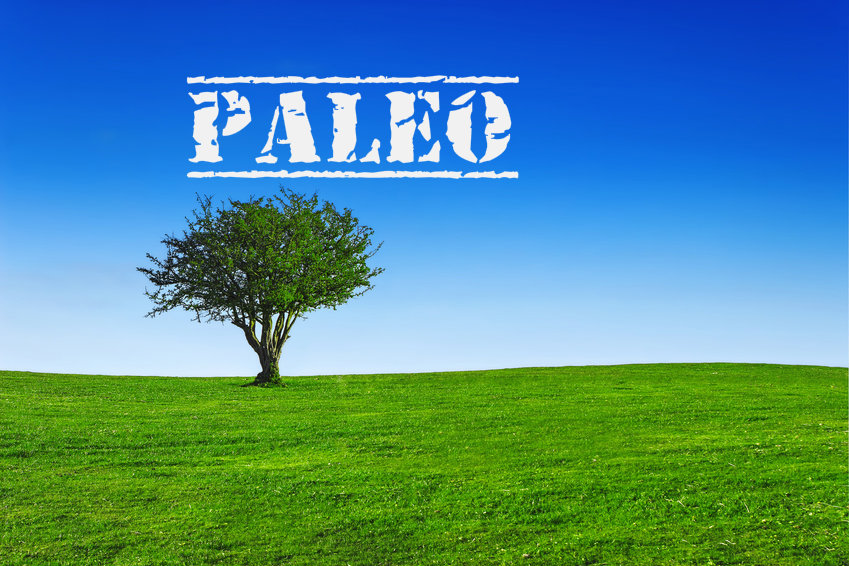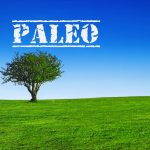 Chances are you have bumped into the term “Paleo Diet” at some stage. The movement towards eating a Paleo type diet has gained a lot of momentum in the past few years. There are books, cookbooks, websites, and articles written by countless of people who have personally experienced tremendous health benefits by eating the Paleo way. Renowned physicians and researchers have endorsed the diet by sharing clinical and scientific proof that validates the benefits of eating a diet without grains, legumes, and dairy.
Chances are you have bumped into the term “Paleo Diet” at some stage. The movement towards eating a Paleo type diet has gained a lot of momentum in the past few years. There are books, cookbooks, websites, and articles written by countless of people who have personally experienced tremendous health benefits by eating the Paleo way. Renowned physicians and researchers have endorsed the diet by sharing clinical and scientific proof that validates the benefits of eating a diet without grains, legumes, and dairy.
I have personally adopted this way of eating again after embarking on a health building protocol that aims to strengthen my digestive system and my personal experience is one more confirmation that there is something to the Paleo diet.
Is it the perfect diet? I don’t believe there is one. I think the perfect diet varies from person to person. It is dependent on bio-individuality, genes, environment, age, stage of health, level of physical exercise, and personal beliefs. But what I do believe is that a Paleo type diet can help kick-start a health-building and healing process that is invaluable especially in the case of digestive issues, inflammation, weight loss, diabetes, auto-immune diseases and many other health issues.
What is a Paleo type diet?
This way of eating goes by many different names: Paleolithic Diet, Primal Diet, Hunter-Gatherer Diet, Ancestral Diet, Whole 30, and there are many permutations and combinations within these approaches. I personally don’t like the word “diet” and prefer the term “way of eating” as this hints at more of a life-long approach rather than a temporary quick-fix. So rather than to label I will explain the underlying philosophy:
As a species we have been shaped genetically over a period of roughly 2.6 millions of years to eat a diet which consists of high quality animal protein (which includes fish and seafood), plenty of vegetables, some roots, fruits, nuts and seeds.
Any foods that were not accessible to our hunter-gatherer ancestors, such as dairy products, grains, legumes, processed oils, and refined sugar are believed to be foods that we are not genetically meant to be eating. According to the followers of these diets it has been the advent of agriculture and the domestication of animals that has led to modern-day health problems such as heart disease, obesity, and diabetes because we humans are not adapted to be eating these relatively “new” foods.
As with all other theories and beliefs there are plenty of counter-arguments and opposing views to this way of thinking and I am least qualified to argue pro or con from a scientific point of view. There are many very smart people out there who provide plenty of data and research reports to back up their claims and for those of you who need data to come to a personal point of view, I will list some of my favorite resources below this article.
However, there is irrefutable and objective proof that backs up the claim that grains, legumes and dairy are potential troublemakers. Many of us have problems digesting these foods and a compromised digestion is one of the root causes of many health complaints. It takes a strong and healthy person with a good digestive system and a fully functioning healthy gut barrier to efficiently digest grains, legumes and dairy and even then special preparation methods need to be used to eliminate some of the anti-nutrients and toxins that these foods contain.
And unfortunately there are not very many people left who have a strong digestion and a healthy gut. Because of all the modern day food toxins, stress, infections, and pathogens, most of us have an impaired digestive system that needs healing even if we often don’t even realize it. A compromised intestinal barrier does not always present itself with digestive symptoms. Complaints can be seemingly unrelated. Following an eating plan that excludes grains, legumes, dairy, sugar and vegetable oils is therefore doing a lot of people a lot of good with all kinds of symptoms magically disappearing.
I will share with you what we can take away from the Paleo, Primal, and Hunter-Gatherer movement and all their derivatives. Even if this is not for you, I highly recommend you read through the full article, maybe even try it on yourself for a while (which always provides the best proof) and use your observations to figure out what works best for you.
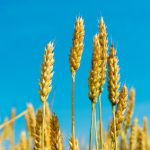 1. The Case Against Grains
1. The Case Against Grains
Grains are an important dietary component in most cultures around the world and the idea of not eating them is often unheard of. Imagine taking the roti or rice out of an Indian meal, or the taco out of a Mexican, pasta out of Italian, and bread out of a Dutch meal. Impossible! This is the way we have been eating our entire lives! Our parents, grandparents ate this way! How can it be wrong?!
The Nutritional Aspect:
Refined grains such as white rice, quick cooking oats, and white flour are the pure carbohydrate component of a whole grain. Bran, germ, fiber, vitamins and minerals have all been stripped off which leaves them with no nutrients and all calories. These refined grains are often used to make processed products such as baked goods, bread, snacks, desserts, etc. which contain further calories in the form of sugar and other ingredients that do not exactly add to their nutritional value.
It is plain to see why this form of grains is best left out of our diet.
• Whole grains
Grains in their whole form contain fiber, vitamins and minerals along with energy in the form of carbohydrates and some protein. Which is a much better deal compared to refined grains.
There are however, a few things inherent in grains that affect our ability to absorb these nutrients. I will go into this in more detail below but for now, purely looking at the nutritional aspect of grains, it is important to note that there is not one health boosting component in a whole grain, be it vitamin, mineral, carbohydrate or fiber, that you can not get from other foods such as vegetables and fruits. These foods in fact, are much more nutrient dense and by filling up a large portion of our meals with grains we leave less space for the more nutrient dense alternatives.
Considering the problematic aspects associated with whole grain consumption and the fact that we don’t really need them in our diet we have to wonder whether the human race started eating them to survive or thrive and whether we, if we are lucky enough to have a choice, should consume them as much as we do, if at all.
The Problematic Phytates and Protein Aspect
Whole grains contain phytic acid (or phytates), also known as anti-nutrients because they bind with minerals and prevent them from being absorbed in our bodies. Of all the nutrients found in whole grains, not a lot is actually available to us.
Special preparation methods such as soaking, sprouting, fermenting etc. partly break down these phytates but not all potential problems are eliminated through these methods.
We are all familiar with gluten and this is one of the most well known problematic proteins found in grains (in this case wheat, barley, rye, spelt and triticale) but there are others. These proteins interfere with our digestive function by temporarily changing the gut barrier, allowing these proteins to cross through the barrier and trigger an immune response. This leads to inflammation in the gut and if this inflammation is chronic through continuous exposure to these proteins the inflammation can start to occur anywhere else in the body.
Some health problems that have been linked to this kind of chronic inflammation are allergies, arthritis, auto-immune disease like Crohn’s, Lupus, Celiac, chronic fatigue, fibromyalgia, ulcerative colitis, psoriasis, eczema, endometriosis, depression, anxiety etc.
Not good. Now some people like to cite the example of cultures such as remote villagers in Switzerland who are strong and healthy and live on a diet of raw dairy and sourdough bread. What these people fail to realize is that these traditional cultures are unexposed to our modern food toxins, live active lives in clean air, without the modern day stressors, and are therefore likely to have a strong digestive function. Furthermore they take the time to soak, ferment and specially prepare those grains as in the case of sourdough bread.
2. The Case Against Legumes
Legumes (such as beans, peas, lentils and peanuts) are another item consumed all over the world. They provide vegetarians with protein and non-vegetarians with a delicious addition to their meals.
Like whole grains, legumes have certain downsides associated with eating them and I am not just referring to the well know phenomena of flatulence… Or actually I am too…
• Phytates
Yes, even legumes contain phytic acid, making nutrients less bio-available. Special preparation methods such as soaking and thorough cooking are used to eliminate these phytates. This does however, take time and effort and, as in the case with whole grains, the question is whether it is worth the effort if you can obtain the same nutrients and more from vegetables and fruits?
• FODMAPS
This stands for Fermentable Olisaccharides, Disaccharides, Monosaccharides and Polyols) and is the name of a group of fermentable carbohydrates and sugar alcohols found in various foods such as grains, beans, vegetables and fruits.
In beans these fermentable carbohydrates are called galactans and because they are not properly absorbed in the small intestine, they provide food for bacteria living in the small and large intestine. The bacteria ferment these galactans creating symptoms such as gas and bloating.
If there is dysbiosis in the gut (which there very often is) the galactans feed the bad bacteria in the gut making the situation worse.
• Lectins
These are problematic proteins found in legumes that are toxic to humans. Fortunately they are fully destroyed through the cooking process except in the case of peanuts, which is why they are best left out of the diet.
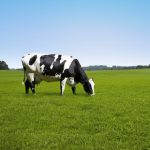 3. The Case Against Dairy
3. The Case Against Dairy
I have written an article on dairy that looks at the potential problems associated with its consumption in great detail. You can find this article here.
With the exception of raw dairy products, which are considered to be acceptable by some of the Paleo followers, regular dairy products are avoided for the following reasons:
• Milk is a Growth Promoting Food
Dairy is, by its very nature, a growth promoting food that contains substances that stimulate aggressive growth in baby mammals. Once these baby mammals have grown enough to be able to chew their own food they stop drinking mother’s milk. The question is whether we should continue to drink another mammal’s “mother’s milk” well beyond our weaning age and what the effects of such growth promoting substances are on our bodies.
• Casein
Casein makes up 80% of the protein found in milk. Certain fragments of this protein (peptides) are able to cross the intestinal barrier in very young children and people who have a compromised digestive function (intestinal permeability) and once in the bloodstream, they bind with opioid receptors inducing morphine-like effects.
Casein also shares some structural properties with the protein found in gluten, which makes it difficult to tolerate for many gluten sensitive people.
• Lactose intolerance
Milk contains a sugar called lactose, which requires the enzyme lactase to be digested. It is estimated that 75% of the world’s population does not have enough of the enzyme lactase to be able to efficiently digest milk, leading to symptoms like gas, bloating, general other gastro-intestinal problems, acne, headaches and other symptoms.
• Insulin Effect
Dairy contains whey, another type of protein found in milk, which contains certain several types of smaller proteins and hormones that are, among other things, meant to stimulate growth as well as the production of insulin.
The sugar lactose in milk stimulates insulin production as well making dairy an extremely high insulinogenic food best avoided especially by those that have insulin related health problems.
• Problems Associated with Pasteurization and Homogenization
The heavy processing of milk (pasteurization and homogenization) leads to a reduced nutritional value as well as changes in the structure of milk, making it more difficult to digest.
• Calcium misconceptions
We have all been taught to drink milk in order to build strong bones. Milk advertising campaigns even today are built on that common misconception.
The consumption of dairy is not essential for the building of strong bones. There are other ways to obtain calcium in the diet through green leafy vegetables, sea vegetables, small fish with edible bones, nuts etc. The calcium found in these in foods is in fact more bio-available to us compared to the calcium found in milk.
3. The Other No-Nos
In addition to grains, legumes and dairy there are a few additional foods that are not considered to be “Paleo-approved.” These foods are refined sugar, alcohol and processed vegetable seed oils. The first two speak for themselves. You can read more about the health damaging effects of sugar in this article.
Refined Vegetable Seed oils are detrimental to our health for a number of different reasons all of which are outlined in this article. To summarize, these oils are highly processed, refined and oxidative in nature and they are a source of omega 6 fatty acids, something which we are getting too much of in our diets. All these factors contribute to these oils being highly inflammatory in nature.
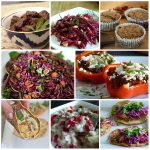 4. What Do You Eat?
4. What Do You Eat?
As I mentioned earlier, the foods that have been a mainstay of the human diet for millions of years are foods that provided good nutrition and solid building blocks for growth, development and good health. These foods are:
• Protein (high quality such as grass fed, free range, wild caught etc.)
- meat
- chicken
- seafood
- eggs
• vegetables
• fruit
• nuts and seeds (in limited amounts)
• healthy fats such as:
- ghee
- coconut oil
- olive oil (used in cold preparations)
The key for a standard meal is to pick a protein source, the amount approximately the size of your palm (or two depending on your personal situation) and add plenty of fresh vegetables to fill your plate.
Some examples of meals are:
- Baby spinach salad with roasted balsamic pumpkin and poached eggs
- Fish curry on a bed of cauliflower rice and a side salad
- Steamed snapper with ginger, spring onion and garlic and a cucumber, onion and parsley salad
- Broiled Moroccan sardines and a chopped salad with roasted sesame seeds
- Bolognese style minced beef stuffed into capsicum halves with a tomato salad
- Paleo porridge made with almond meal, flax seeds, coconut milk, banana and fresh fruit
- Mutton Rogan Josh with cauliflower rice and a cucumber salad
- Pan fried chicken breast with an arugula beet salad with pumpkin seeds
The possibilities are endless and you can play around with alternatives to foods you are used to having in your diet. I have learned to make a delicious “roti” out of green bananas or plantains to have with my Indian meals. And cauliflower “rice”. Or zucchini noodles with Italian. Tacos made with egg whites and coconut flour for Mexican meals. And bread made with almond meal. You will find some links to recipes in this post: Paleo: What DO you eat?
You will find yourself eating more vegetables than you ever have, enjoying your time in the kitchen preparing them and you will notice annoying little health-related symptoms slowly disappearing. I sleep better and deeper, feel more fresh, have a smooth digestion, clear skin among other things.
Am I going to eat this way forever? Not sure. For now it is suiting me perfectly and helping me heal my gut and achieve my health goals.
That there is something to this approach to eating is for sure. It is wholesome, clean, rich in nutrients, very satisfying and health promoting and it is worth a try just to see if it works for you and helps you move closer towards your health goals. It will help you in becoming more aware of your body and its requirements, something that is essential in your journey towards perfect health.
Monique
Other blog posts on my personal experience with the Paleo approach:
Resources:
These three websites are great places to start if you are looking for more information and research based articles on the Paleo diet:
Mark Sisson is a leader in the growing Primal / Paleo movement in the U.S. He runs this hugely popular fitness and health blog and has written a number of books, including The Primal Blueprint. Whether the Paleo / Primal lifestyle is for you or not, his articles are interesting, well researched and thought provoking. He even runs a Primal Blueprint Expert Certification Program for those who want to delve down deeper.
Chris Kresser is a practitioner of functional and integrative medicine and a licensed acupuncturist. His website, books, and podcasts contain well-written and researched information on diet and a wide range of health topics.
Rob Wolf is a former research biochemist and the New York Times Best Selling author of The Paleo Solution – The Original Human Diet. A student of Prof. Loren Cordain, author of The Paleo Diet, Robb has transformed the lives of hundreds of thousands of people around the world via his top ranked iTunes podcast, book and seminars.

